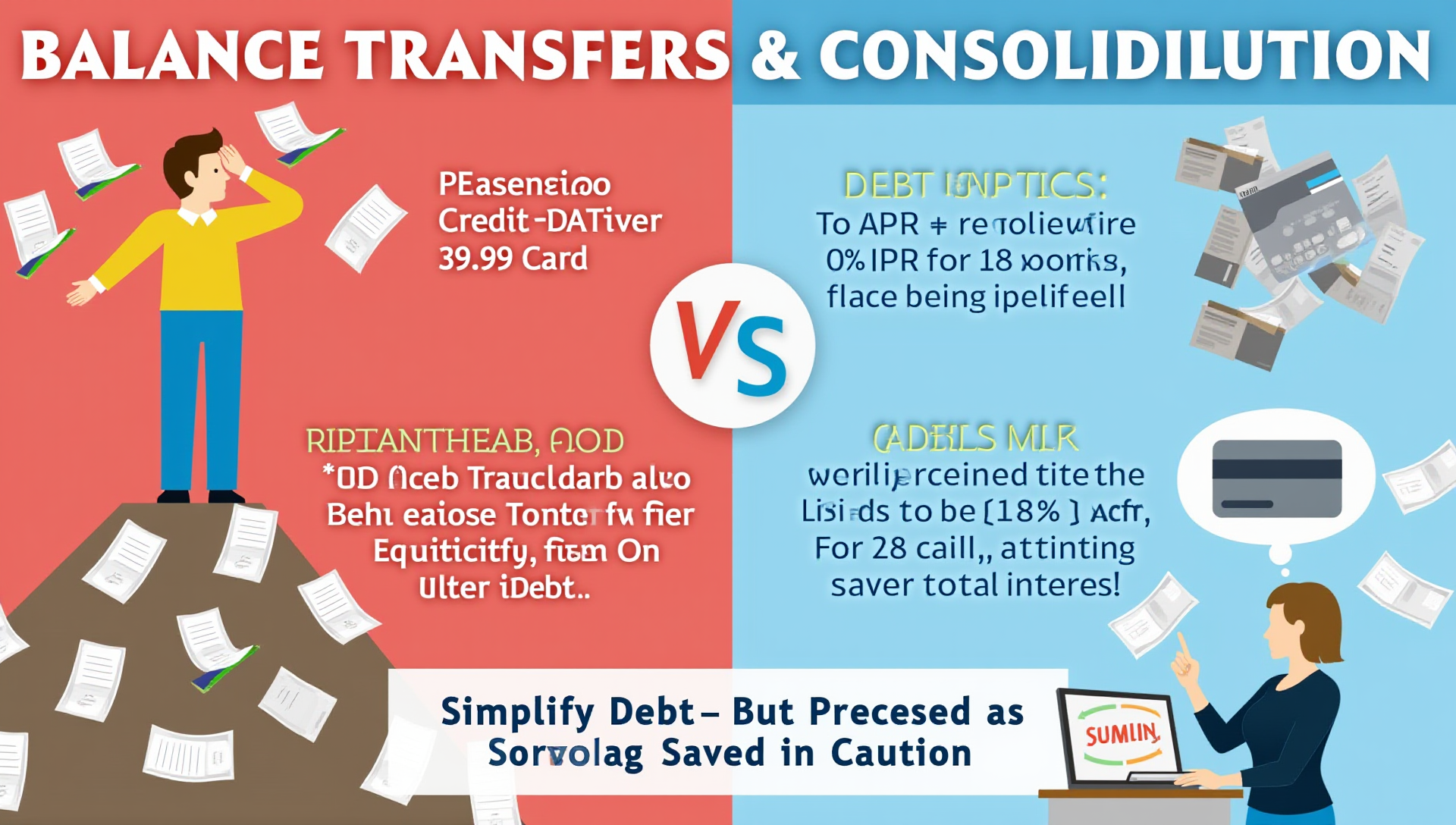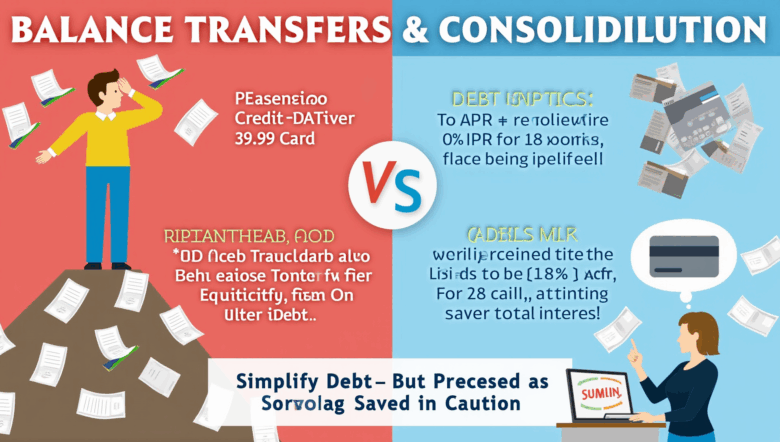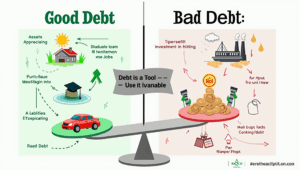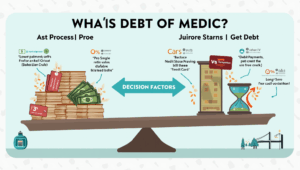 Balance Transfers and Consolidation: Are They Right for You?
Balance Transfers and Consolidation: Are They Right for You?
In a world where debt is increasingly common, managing multiple credit cards, loans, and interest rates can be overwhelming. For those struggling to keep up with payments or simply looking for more efficient ways to pay off debt, balance transfers and debt consolidation can offer a potential solution. But like any financial decision, they come with pros, cons, and nuances worth exploring.
This guide delves into the key concepts of balance transfers and debt consolidation, when they make sense, and how to use them wisely to improve your financial health.
Understanding Balance Transfers
A balance transfer involves moving debt from one or more credit cards to another card—usually one with a lower or 0% introductory interest rate. This strategy is designed to help you save money on interest while you pay down your debt more quickly.
How It Works:
- A credit card issuer offers a promotional interest rate (often 0%) for a limited time, typically 6 to 21 months.
- You transfer existing credit card balances to this new card.
- You pay off the balance before the promotional period ends to avoid high interest charges.
Pros:
- Temporary relief from high interest rates
- Opportunity to pay off debt faster
- Simplifies payments
Cons:
- Balance transfer fees (usually 3-5% of the transferred amount)
- High interest rates after the intro period ends
- Potential impact on your credit score if you open new accounts or increase your credit utilization
Understanding Debt Consolidation
Debt consolidation involves combining multiple debts—like credit cards, personal loans, or medical bills—into a single loan with one monthly payment. This can be done through a personal loan, home equity loan, or a debt management plan through a credit counseling agency.
How It Works:
- You take out a new loan large enough to pay off your existing debts.
- You use the funds to pay off your balances.
- You make one monthly payment on the new loan, ideally at a lower interest rate.
Pros:
- Single, manageable monthly payment
- Potentially lower interest rate
- May improve credit score over time by reducing credit utilization and ensuring consistent payments
Cons:
- May require good credit to qualify for favorable terms
- Risk of falling back into debt if spending habits don’t change
- Possible fees or closing costs
Factors to Consider Before Choosing
- Your Credit Score: Qualifying for the best balance transfer cards or consolidation loans typically requires a good to excellent credit score.
- Interest Rates: Compare current rates on your existing debt to the rate offered on a new card or loan.
- Fees and Terms: Look beyond the promo rate. Are there transfer fees, origination fees, or prepayment penalties?
- Your Financial Habits: Will this change help you eliminate debt, or simply delay the inevitable? Consolidation is not a cure-all—it must be paired with better budgeting and spending habits.
- Total Cost: Consider the total cost of repayment over time, including interest and fees. Sometimes staying with your current repayment plan may be cheaper.
Real-World Example: Mark’s Debt Dilemma
Mark had $12,000 spread across three credit cards, all with interest rates above 20%. Making minimum payments wasn’t making a dent. He applied for a balance transfer card offering 0% APR for 18 months with a 3% transfer fee. After transferring the balances, he created a strict repayment plan, dedicating $700 per month to debt. By the end of the promo period, he had paid off his balance—saving over $3,000 in interest.
Tips for Making It Work
- Create a Repayment Plan: Know how much you need to pay each month to be debt-free by the end of the promotional or loan term.
- Avoid New Debt: Don’t add to your balance while paying off consolidated debt.
- Track Your Progress: Use budgeting tools to monitor your debt payoff and spending habits.
- Read the Fine Print: Understand all terms and conditions before signing.
When It Might Not Be Right
- If you have poor credit and can’t qualify for a favorable rate.
- If you’re likely to accumulate new debt.
- If the fees outweigh the savings.
- If you won’t be able to pay off the balance before the promo period ends.
Alternatives to Consider
- Debt Snowball or Avalanche Methods: Pay off debts in order of smallest balance or highest interest rate.
- Credit Counseling: Work with a nonprofit agency to create a structured repayment plan.
- Negotiating with Creditors: Some lenders may offer hardship programs or reduced interest.
Final Thoughts
Balance transfers and debt consolidation can be powerful tools for managing and eliminating debt, but they’re not a magic fix. Like any strategy, they work best when paired with disciplined financial habits and a clear repayment plan.
Take time to assess your financial situation, weigh your options, and choose the approach that aligns with your goals and behaviors. Whether you decide to transfer balances, consolidate, or explore alternative routes, the path to financial freedom starts with informed, intentional choices.
The key is not just to reorganize debt—but to resolve it. Start by evaluating where you stand, and build a plan that leads you forward.




